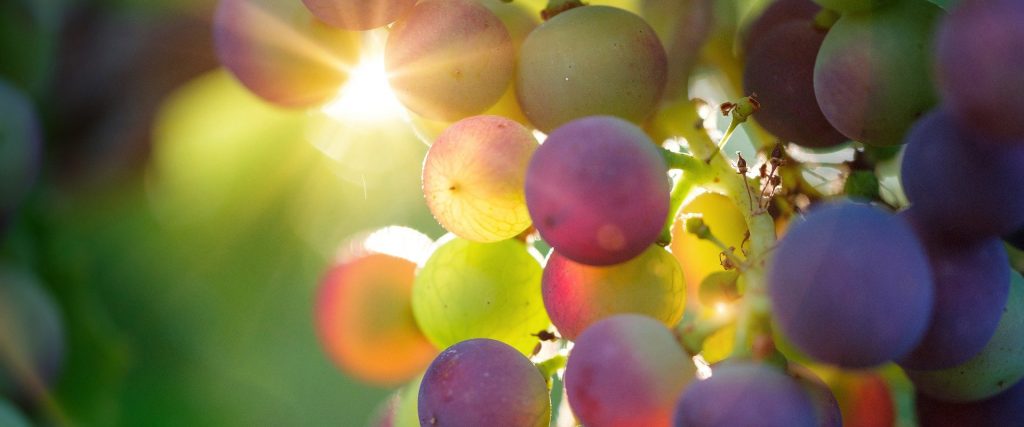Drawing on the heritage of venerable vineyards and a willingness to explore new terroirs, Argentine wineries are expanding their range to include types of grape that have historically been overlooked or that have never been tried before. Today, original Argentine wines from Italian varieties are helping the country´s winemaking industry to recover a lost heritage.
Argentine wines from Italian varieties: roadmap
There is no doubt that the Argentine wine industry is engaged in a process of expanding its range. While some wineries are exploring new terroirs and even regions where wine has never been grown before, others are making argentine wines from italian varieties using grapes that local consumers and export markets don’t tend to associate with Argentina. More and more wineries are beginning to produce wines such as Sangiovese, Barbera, Ancellotta, Cassavecchia, Verdicchio and Pinot Grigio, among others. Some have history in the country but have been overlooked in favour of French varieties while others are brand new in Argentina.
‘We are seeing growth in demand for non-traditional varieties, allowing Argentina to rediscover its potential for diversity, which has existed in the past,’ says Pablo Navarrete, Oenologist at Vinos de la Luz. The winery uses Sangiovese for its Callejón del Crimen Rosé and Callejón del Crimen Gran Reserva Sangiovese, drawing on a winemaking heritage that is receiving renewed interest from oenologists and agricultural engineers: ‘The original owner of our vineyard was an Italian immigrant who planted a parcel with Sangiovese in 1966. It’s one of the oldest vineyards in the Uco Valley.’
‘Italian grapes are a fundamental part of our winemaking history, they speak to the hard work and character of immigrants who made lives for themselves in the country’s winemaking regions,’ says Héctor Durigutti, whose Finca Victoria establishment in Las Compuertas (Mendoza), contains Cordisco (Montepulciano) and Nero D’Avola vines. He makes Proyecto Las Compuertas Cordisco with the former. ‘Meanwhile, we’re working on a lot of Italian grapes from the east of Mendoza, Rivadavia, for our Cara Sucia line. They come from family vineyards planted in 1947: some, such as Sauvignonese, Barbera and Buonamico, are used in co-fermentations that go into our red and white blends and there are also some special edition single varietals such as Cara Sucia Sangiovese and one we’ll release later this year: Cara Sucia Nebbiolo.’
A very indicative example of Argentina’s diverse winemaking heritage is Corbeau Wines, a winery that has been using the Ancellotta variety in its Pixels and Mad Birds lines: ‘We discovered it in 2007 when we bought a vineyard where, unbeknownst to us, Ancellotta was mixed in with a parcel of Malbec,’ says Francisco Rodríguez, Brand Manager at Corbeau Wines. ‘After some research in association with the INTA technological institute we found out that it was Ancellotta, of which only 130 hectares are under vine in Argentina. In 2008 we fermented it on its own and were thrilled with the results.’
Ancellotta originally comes from the Emilia-Romagna region in northern Italy, and it is also made by Viña Las Perdices for their Ala Colorada line, which specializes in varieties rarely seen in the country, and also in blends in which the grape is not mentioned. ‘Ancellotta has been used for blends with other varieties with less body and structure because it has excellent concentration and anthocyanin content,’ says Fernando Losilla, the winery’s oenologist. ‘Recently, some wineries have begun to offer single varietals but with a more gentle concentration; it’s a grape that offers a lot of different possibilities to winemakers.’
New developments
However, the resurgence of Argentine wines from Italian varieties is not just a case of the rediscovery and re-evaluation of existing old vines. A lot of wineries looking to expand their range have imported Italian varieties, some of which have never been seen in the country before. Doña Paula, for instance, has planted Casavecchia – a rare variety originally from the Campagna area, only 100 hectares of which exist in the entire world. It is featured in the red blend Doña Paula Altitude Series 1350.
‘We started to grow Casavecchia a few years ago when we decided to introduce a new variety to the country and had to register and import it. We’d tried a few micro-productions made by an Italian nursery and liked them. We believe it has a very unusual aromatic profile for a red,’ says Martín Kaiser, Assistant Manager of Viticulture and Oenology at Doña Paula.
Another winery adding argentine wines from italian varieties to their portfolio is Escorihuela Gascón, who are producing Sangiovese for their Escorihuela Gascón line and Barbera for their premium Pequeñas Producciones line and also own some Verdicchio vineyards. ‘16 years ago, the winery decided to import some varieties from Italy, selecting extremely pure examples to bring over,’ says the oenologist Matías Ciciani Soler. ‘We started a project with three grapes: Sangiovese, which you find throughout Italy, Barbera from Asti in Piedmont, and Verdicchio from the March region. Once we began to make them we found that they adapted incredibly well to our terroir in Agrelo and decided to bottle them. In time, they became icons of the winery.’
Barbera was also planted in 2014 in vineyards owned by the Stella Crinita winery in Vistaflores (Mendoza). They use the grape for a biodynamically certified red varietal.
The adaptation of foreign varietals to local terroirs has involved a lot of hard work. ‘We bought the plants in Italy in 2011 and didn’t have much information about the variety so we decided to prune it in four different ways. After three years of research we concluded that the kind that suits it best is cordon pruning,’ says Maricruz Antolín, Oenologist at Bodega Krontiras who make Agliánico for their label Doña Silvina Family Selection. The technique, she says: ‘leads to vines with good natural acidity and an aromatic profile (pink grapefruit, menthol) very different to traditional varieties.’
But Agliánico certainly isn’t the only Italian grape to adapt well to the climate in Mendoza. ‘Our vineyard is in the Uco Valley, which is very well suited to growing Pinot Grigio,’ says Andrea Ferreyra, Head of Oenology at Bodega La Celia, which uses the variety for their Reserva line. ‘There’s a temperature range that encourages the development of aromas that don’t exist in other regions.’
In addition to the success of Agliánico, Barbera and Pinot Grigio, several other Argentine wines from Italian varieties are doing well: Corbina at Bodega Masi; Nebbiolo at Ver Sacrum; Lambrusco at Pumalek; Glera at Alfredo Roca; and Fiano at Caelum, to name just a few.



